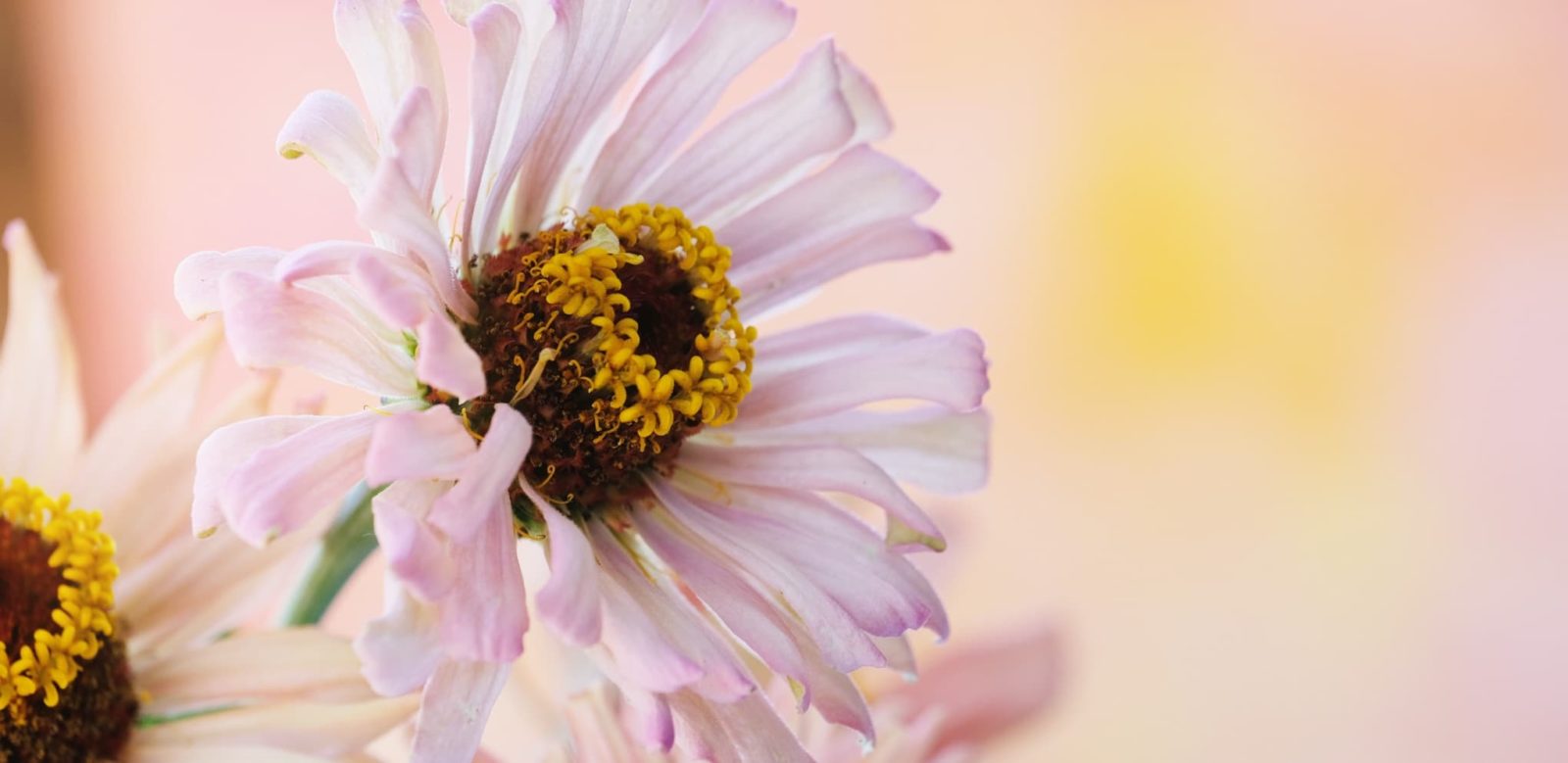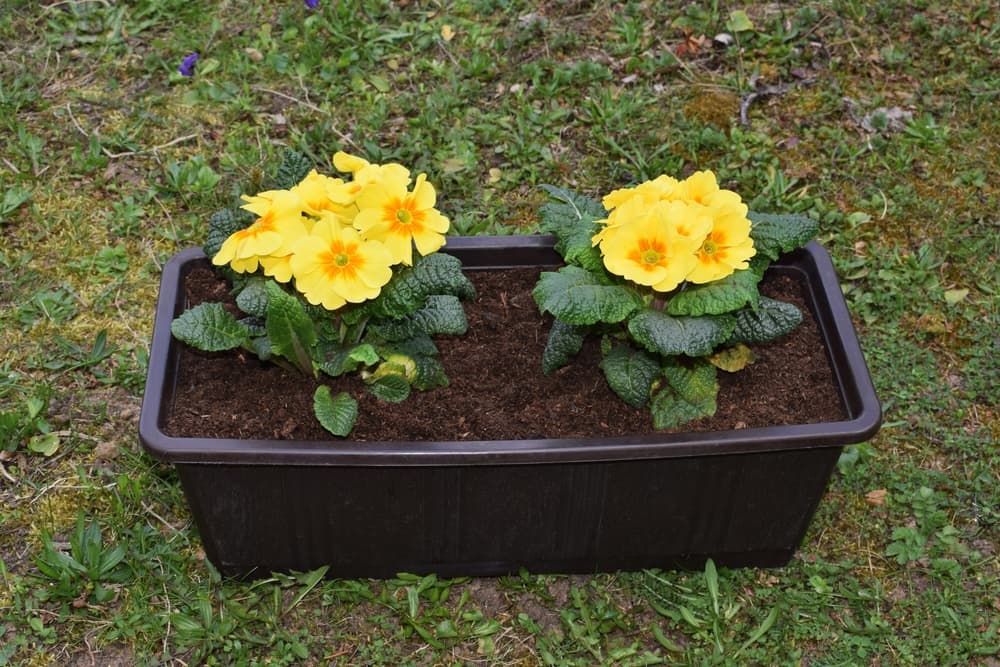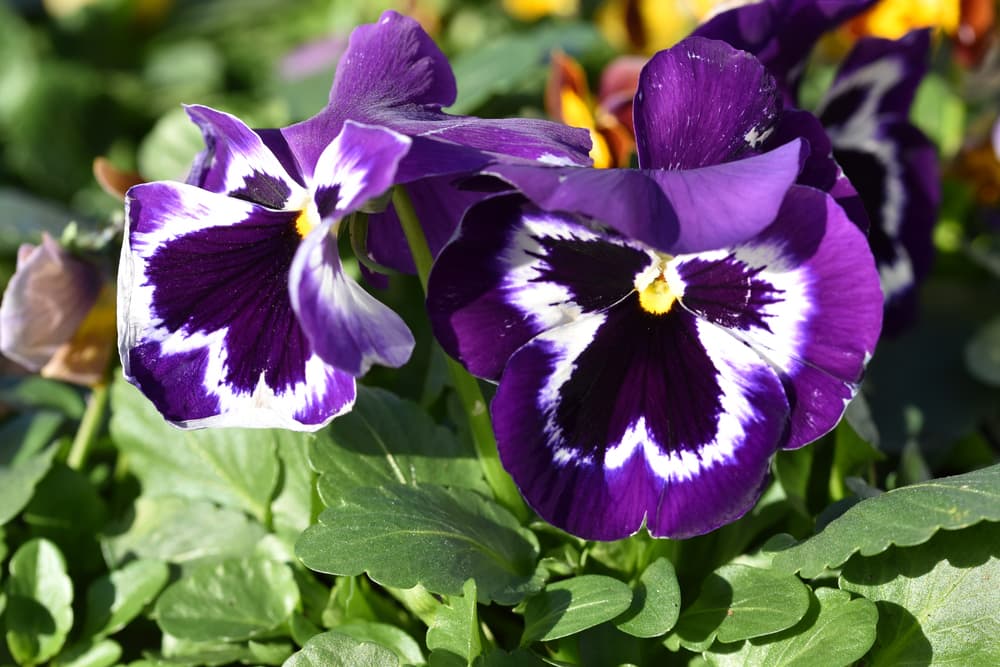“A Wonderful Sense Of Achievement” – The Flowers Gardeners Love To Grow From Seed

Reviewed By COLIN SKELLY

Colin is a Horticulturist and Horticultural Consultant with experience in a range of practical and managerial roles across heritage, commercial and public horticulture. He holds the Royal Horticultural Society’s Master of Horticulture award and has a particular interest in horticultural ecology and naturalistic planting for habitat and climate resilience.
Contributions From JOE HARRISON

Joe Harrison is a Garden Writer & Content Creator who is also known as 'Grow With Joe' across his social platforms. Joe is best known for his focus on edible gardening in his allotment and the tips he shares to help involve more children in horticulture. He is also the co-founder of the online community The Tomato Club.

Sunil is the owner and curator of the garden at 13 Broom Acres, which is open to the public during the summer months under the National Garden Scheme. He has also published a book, ‘A Year In A Small Garden’, about the changes over the course of a year in his garden.

Karen Liebreich is a Gardener, Historian and Author whose works include ‘The Family Kitchen Garden’. She is the Director of Abundance London, a voluntary project aiming to reconnect people with nature - and also runs the Chiswick Flower Market. Karen was awarded an MBE in 2013 for services to horticulture and education.

Garden Editor for House & Gardens, Clare Foster has worked as a Writer for over 25 years. She has written several gardening books that have been met with critical acclaim from renowned gardeners such as Beth Chatto. Clare also writes her own blog and runs an online shop from her personal website, Bud to Seed.
In this article we identify fourteen ‘fab’ flowers which are a walk in the park to grow from seeds.
No need for some special type of soil, specific watering needs, fertiliser requirements, particular sun-shade mix, staking and support canes, or recurring pruning duties.
All of the following flowers germinate reliably from seed and are low-care to no-care ornamental plants.
“Growing from seed is a surprisingly simple process and is achievable by anyone regardless of their experience, whether if they have a garden, an allotment or even a greenhouse,” says Horticulturist and Garden Writer Joe Harrison.
“All you need is somewhere light and warm (such as a kitchen windowsill), a tub, container, pot or tray, compost and a little patience.”

Here is a general guideline (though certainly not a hard-and-fast rule):–
For any given flowering plant, all other things being equal, newer or more unusual cultivars are least easy to grow and require the most care, whereas seed packets with the word ‘mix’ are the easiest and simplest to grow and will germinate the most consistently.
Most of our selections, both annuals and perennials, are notorious self-seeders so where the annuals are concerned consider not deadheading on a continual basis and allow some number of the blooms to wither and go to seed; then, the following season you will be rewarded with a fresh batch of plants without sowing a single seed!
“Growing from seed is so easy and so rewarding if you are able to give it the time, and you can find so many new and interesting plants, especially annuals,” shares Garden Writer Clare Foster.
If you have good quality seeds, halfway decent soil, and regular rainfall, all you need do is to sprinkle-sow seeds of the following flowering plants – and forget about them.
“I think seeing a seed put out a tiny leaf and then transform into something ridiculously beautiful is just one of the most amazing things ever,” shares Gardener Karen Liebreich.
“My secret tip would be to notice how amazing nature is and to cherish and nurture it. It desperately needs our help.”

At least some will germinate and put up lovely blooms.
“It is worth noting that sometimes seeds will fail to germinate and if your seeds do germinate, sometimes the seedlings will die for seemingly no apparent reason,” shares Joe.
“This is perfectly normal, albeit very disappointing, and can and does happen to even the most experienced gardener, so don’t get too disheartened when this occurs.”
What has been stated is neither an exaggeration nor a recommendation – it is a simple statement of fact to get across the reality that some flowers are really, really easy to grow from seed.
However, if you take just a little time and trouble over sowing and growing (have a look at our gardening guides), you’ll increase your chances of getting delightful flowering plants to nearly 100%.

“I might not grow them every year, but there are several favourites that I like to grow from seed for the simple reason that they are foolproof, yet still give that wonderful sense of achievement,” shares Sunil Patel, owner of 13 Broom Acres garden.
“Aquilegia, delphiniums, calendula, Swiss chard and basil can be a success story without even thinking.
“I can fall back on these as a pick-me-up when other, more difficult seeds have either failed or succumbed to rot, pests or bad weather.”
We have tried to sequence our own Fab Fourteen in ascending order of ease of growing; that is, this list progresses from easy to easier to easiest.
We also suggest a couple of seed varieties for each flower.
1) Snapdragons

- BOTANICAL NAME: Antirrhinum
- HARDINESS RATING: H3
- RECOMMENDED VARIETIES: ‘Antiquity’, ‘Chuckles’, ‘Day & Night’
This plant bears irregularly shaped flowers each of which resembles a mythical beast’s head.
Squeezing and releasing the sides of the flowers causes the ‘jaws’ to open and close – a little childhood delight that the inner child may never get tired of!
The colours are traditionally in pale, pastel shades in yellows and pinks, and also in bright lilacs and purples.

Snapdragons come in both annual and perennial types and have a very long flowering season from June even up to October.
Though some tall varieties are upright and have stoutish stems, others are limp and floppy; these require staking and are not recommended for the purposes of this article.
2) Hollyhocks

- BOTANICAL NAME: Alcea rosea
- HARDINESS RATING: H5
- RECOMMENDED VARIETIES: ‘Las Vegas Mix’, ‘Chater’s Mix’, ‘Black Knight’
Hollyhock flowers are open and bowl-shaped with broad petals.
They occur mainly in the pink through purple spectrum, with yellow and crimson being less common colours.
The plants are very tall and stately yet they are naturals for cottage gardens.
Their upright and narrow profile makes them a top choice for small gardens too.
Annuals, biennials, short-lived perennials – Hollyhocks are said to be all those things and, in fact, their lifetime depends on the particular variety and the climatic zone it is grown in.

But what is for sure is that they are excellent self-seeders so you don’t have to worry about them ‘coming back.’
They bloom for 2-3 months in summer and autumn.
Hollyhocks can succumb to rust but rust-resistant varieties like Alcea ficifolia are available.
3) Scabious

- BOTANICAL NAME: Scabiosa
- HARDINESS RATING: H4
- RECOMMENDED VARIETIES: ‘Tall Double Mix’, ‘Blue Note’
Scabiosa, also known as Scabious, have densely-packed dome-shaped flowerheads in double form with cutely wavy and bent petals but their distinctive feature is the central ‘pincushion’ disk.
Mostly found in the pink through purple colour range, blue and maroon-black cultivars are probably the most riveting.
Copious numbers of blooms are produced from July through September, and these nectar-rich flowers are just magnets for bees and butterflies.

Compounds made from the flowers have long been used to treat skin conditions and also other diseases.
They are as perfect for cottage gardens and beds, usually as companion plants, as they are for vases.
Scabious are perennials as such but in the United Kingdom they are effectively annuals.
4) French Marigold

- BOTANICAL NAME: Tagetes patula
- HARDINESS RATING: H2
- RECOMMENDED VARIETIES: ‘Fantasia Mix’, ‘Durango Mix’
French Marigolds were cultivated in France from plants originating in Central and South America, hence their name.
These are the shorter and bushier types of marigold with a smaller flower, and are also among the healthiest and most resistant types.
Flowers occur in both single and double form, and their colours range from rich yellows through scarlet and rose red with an amazing variety of golden and orange hues.

Several varieties are bicoloured in yellow and orange.
French Marigolds are unbeatable choices for mass plantings and mixed beds.
They are annuals with a very long flowering season – while some will get started in late spring and others go well into autumn, almost all will bloom all summer long.
5) Gerbera

- BOTANICAL NAME: Gerbera
- HARDINESS RATING: H3
- RECOMMENDED VARIETIES: ‘Hardy Sweet Mix’, ‘Cut Flower Mix’, ‘Fleurie’
Gerberas occur in both single and double form and are daisy types of flowers with numerous narrow rays.
The single forms exude a charming innocence with the disk shape prominently displayed while the double forms are convex and lush.
Available in yellows and pinks through crimson, single forms are best appreciated in white and pale, pastel shades; double forms look best in deep, vivid hues.

Depending on your location in the United Kingdom and the variety, this plant can be an annual or perennial.
Blooming virtually year-round in subtropical zones, in the UK many varieties will put on their respective colour shows from mid-spring clear into autumn.
If you want to introduce a child to the pleasures of gardening, Gerbera is one of the top few choices.
They make terrific pot plants and are quite possibly the most engaging and longest-lasting of cut flowers.
6) Primrose

- BOTANICAL NAME: Primula
- HARDINESS RATING: Varies
- RECOMMENDED VARIETIES: ‘Springtide Mix’, ‘Provence Mix’, ‘Danova Series’
Many Primula Primrose varieties are simple, cheery flowers displaying lovely petals that are wide, slightly creased, and with that ‘patented’ distal notch.
The flowers occur in virtually every colour in both the cool and warm spectrums, so you get it all: pastel-shade cool blues and lavenders, and saturated and vibrant oranges and reds.
Most of them have that other patented Primrose styling: a bright yellow centre.

They are perennials, and may be deciduous or evergreen.
Well known harbingers of spring, some varieties start blooming in December while others start late and continue into June but all will give you something uncommon: bright blooms that beat the swallows to spring.
Finally, Primrose is surely the defining plant of an English country garden – or even townhome garden!
7) Pansy

- BOTANICAL NAME: Viola
- HARDINESS RATING: Varies
- RECOMMENDED VARIETIES: ‘Aalsmeer Giants’, ‘Universal Super Mix’
Among the easy-grow flowers, Pansies are a special joy because they are among the very few cold weather plants that can be grown effortlessly from seed, and also grow automatically as they are very reliable self-seeders.
The flower’s face is vertically oriented and even has an ‘up’ and ‘down’ side!
Many of them display a ‘face,’ which is an especial joy for children.

As for the colours, these bicoloured and multicoloured flowers throw up hues and tones that are among the most diverse and fantastic among all Flowerdom as they cover the entire colour spectrum.
Pansies are effectively annuals and they are among the first flowers to bring cheer to the garden as they emerge in earliest spring and bloom very soon thereafter.
New self-seeded plants bring up unpredictable and incredible colour combinations. Ideal for borders and edging.
8) Sunflower

- BOTANICAL NAME: Helianthus annuus
- HARDINESS RATING: H4
- RECOMMENDED VARIETIES: ‘Stella’, ‘Cut Flower Mix’
Well known the world over for their large flowers that ‘follow the sun’ and the spanking bright-yellow petals that surround a black-brown central disk – the seedhead – Sunflowers are among the healthiest and most robust of flowering plants.
Many varieties can tolerate different climatic conditions.
Giant varieties are exceptionally tall reaching even 6m; at the other extreme, even dwarf varieties suitable for pots are available!

For the most part varieties afford a choice of some shade of yellow for the petals and a choice of browns for the disk, but some cultivars’ flowers open to unusual and attractive dark rust and maroon shades.
Sunflowers are often planted along the boundary of one’s property and can also be grown in pots.
They bloom through the summer and the first half of autumn, and they come in both perennial and annual types.
9) Garden Nasturtium

- BOTANICAL NAME: Tropaeolum majus
- HARDINESS RATING: H3
- RECOMMENDED VARIETIES: ‘Jewel Mix’, ‘Tom Thumb Mix’
Garden Nasturtiums of the Tropaeolum genus come in bushy, climbing, and trailing habits.
As easy-grow, no-care plants we recommend Garden Nasturtiums of bushy or mounding habits.
They produce very attractive funnel-shaped flowers in vivid yellows, oranges, and reds.
The broad petals are wonderfully veined and creased which is a special feature of these flowers.

These plants have quite a long flowering season, typically throughout summer and into autumn.
Though Garden Nasturtiums are deciduous perennials in fact, they are half-hardy annuals in actuality in most regions of the United Kingdom.
“I once grew Nasturtium in a vegetable bed for the edible flowers,” shares Colin Skelly, an RHS verified Master Horticulturist.
“It looked and tasted great but seeded around rather too freely from the large seeds which scattered all through the vegetable beds (Nasturtium will trail and run).
“I still grow it, but only in areas I don’t mind it seeding around.”
These plants will bring much charm and spanking colour to borders and parapet pots for which they are ideal.
And if you want to eat these delightful flowers or the leaves, guess what? You can!
10) Sweet William

- BOTANICAL NAME: Dianthus
- HARDINESS RATING: Varies
- RECOMMENDED VARIETIES: ‘Double-Flowered Dwarf’, ‘Pinocchio’
Sweet William plants have bushy, often mounding, or upright and erect habits.
They are annuals and hardy biennials but the latter usually flower in their second year.
The flower is small and has an open, cheery look about it and its merry charm is given an assist by those amusing zig-zag, ‘frayed’ outer edges.
They are outrageously floriferous and produce gobs and gobs of flowers, both selfs and bicoloureds.

They occur in hues from pinkish-white through ruby red with every imaginable shade of pink from the demurest pastel to deep magenta.
Sweet William varieties’ flowering seasons vary a lot but mid-spring to mid-summer is typical.
These plants are naturals for cottage gardens and hanging baskets, and are also very good for rockeries.
11) Pot Marigold

- BOTANICAL NAME: Calendula officinalis
- HARDINESS RATING: H5
- RECOMMENDED VARIETIES: ‘Orange King’, ‘Kinglet Mix’
Calendulas, also known as Pot Marigolds, are annuals that produce somewhat domed, double flowers with numerous narrow rays.
The flowers are not only edible, they are a well-defined ingredient in several Eurasian cuisines because of their pleasantly piquant taste.
However, you’ll probably plant these easy-grow annuals, not to eat them, but, to bask in the glow these sunny disks generate in all hues of yellows and oranges, from primrose yellow to vivid vermilion.

Many varieties have an unusually long flowering season, producing blooms for months and months with some varieties getting underway in mid-spring and ending in mid-autumn.
They are also very floriferous plants and make a superb choice for mass plantings and also as companion plants.
12) Cosmos

- BOTANICAL NAME: Cosmea
- HARDINESS RATING: H3
- RECOMMENDED VARIETIES: ‘Brightness Mix’, ‘Sensation’, ‘Choca Mocha’
Cosmos are among the most satisfying of easy-grow low-care plants for multiple reasons.
To begin with, the bloom lasts for a long time on the plant and even the cut flower lasts forever in a vase.
Next, they tolerate heat and dry soils better than the vast majority of other plants, even as they produce sizeable and very attractive flowers.
And, oh, they have a long flowering season running for months at a stretch, from spring into autumn.

Cosmos have wide open disk-shaped daisy-like flowers with wideish petals that have multiple notches at the distal end – simple and sweet.
Traditionally single form, some semi-double varieties are also available.
Flowers occur in all colours and all shades of the warm spectrum plus white, and are excellent for mass plantings in beds.
This plant is an annual and is a reliable re-seeder.
13) Zinnia

- BOTANICAL NAME: Zinnia
- HARDINESS RATING: H2
- RECOMMENDED VARIETIES: ‘Bright Spark Mix’, ‘Lilliput Mixed’
Zinnia, our Silver Medallist and runner-up, produces semi-rounded double flowers with densely-packed rays.
Colours are almost always in brilliant, saturated tones in the warm spectrum.
This amazing flowering plant has a rare virtue in which it probably leads the pack.
You can keep cutting flowers and put them in vases in the home, where they are very long-lasting – and the more you cut, the more new buds the plant will produce.

Heat and dry weather do not deter these plants.
Another merit is that they flower prolifically yet have a long flowering season – all of them bloom all summer long with many getting started in spring, winding up in autumn, or both!
Remember to let a goodly number of flowers wither and go to seed: Zinnia is a tender annual but a terrific self-seeder so your dying flowers will give you a fresh set of plants the following year.
Some cultivars also make great accent plants in containers.
14) Pelargonium (Geranium)

- BOTANICAL NAME: Geranium
- HARDINESS RATING: H7
- RECOMMENDED VARIETIES: ‘F1 Magic Beauty Mixed’, ‘Super Hybrid Mix’
Occupying Gold Medal position, Pelargoniums are not the country’s favourite perennial without good reason.
They possess all the virtues of the plants listed above – including being tasty culinary ingredients – and they don’t even need good soil.
On top of that they even stifle weeds and repel pests!
Though there are many types of Pelargoniums with numerous plant habits and even floral forms, the easy-grow mix varieties that we propose have bushy, clumping habits.

Pelargonium flowers may be saucer-shaped or bowl-shaped and occur in single, semi-double and double forms.
Their petals are wide, overlapping and notched; flowers are borne in sprays and clusters.
The hybrid and ‘mix’ seeds of these long-lived perennials give rise to flowers in an array of yellows, pinks, oranges, purples, and reds.
These plants bloom profusely and do so for months on end – while they bloom all summer long, in favourable conditions they will start in mid-spring and end in mid-autumn.

